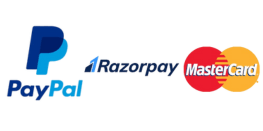
Food Delivery Mobile Application Market Research Report by Deployment (Android, IOS, Others), End-User (Food Delivery, Restaurants, Others), By Component (Software, Services), and by Region- Global Forecast to 2034
June-2025 Formats | PDF | Category: Food and Beverages | Delivery: 24 to 72 Hours
“The Food Delivery Mobile Application Market industry is expected to expand from 36,786 Million in 2025 to $ 77,456 Million in 2034, with a compound annual growth rate of 25.3% “
Food Delivery Mobile Application Market: Overview and Growth in the Upcoming Year
The Food delivery industry has expanded dramatically in recent years, and the rise of mobile applications for food delivery has played a crucial role in altering the way we order and receive meals. Because of these apps’ ease of use and convenience, customers are using them more frequently, which has raised demand for Food delivery services. This article will analyse the current state of the food delivery mobile application market as well as the key advancements and growth opportunities expected in the upcoming year.
In order to capitalise on the growing demand for quick meal delivery services, an increasing number of businesses are entering the fiercely competitive mobile application market for food delivery. The market’s major players, UberEats, DoorDash, Grubhub, and Postmates, each have unique value propositions to entice and retain customers. Because of shifting consumer preferences and advancements in technology, the market is expected to continue growing in the years to come.
In the upcoming year, several noteworthy trends are expected to influence the market for mobile applications for food delivery. One of the significant changes is the increased focus on eco-friendly practices and sustainability. These days, a lot of consumers are searching for food delivery services that prioritise environmentally friendly packaging and sustainable delivery options, which is encouraging companies to adopt more environmentally friendly practices.
Another trend to watch is the rise of cloud kitchens and virtual restaurants. These innovative concepts allow restaurants to expand their delivery capabilities without needing a physical dining area by leveraging technology to boost productivity and reach a larger audience. This trend is expected to gain momentum in the coming year as more restaurants look for ways to adapt to the evolving food delivery landscape.
For Insights Consultancy’s latest market intelligence study, “Global Food Delivery Mobile Application Market 2025, Growth Opportunities, and Forecast,” provides a comprehensive analysis of the Food industry. The report includes demand analysis, industry insights, competition intelligence, and a customer database. It also offers strategic insights into future trends, growth determinants, supplier landscape, demand landscape, CAGR, and pricing analysis. The study also includes Porter’s Five Forces Analysis, PESTLE Analysis, Value Chain Analysis, 4 Ps’ Analysis, Market Attractiveness Analysis, BPS Analysis, and Ecosystem Analysis.
*Note: Sample of the report provides details on the scope and coverage, table of contents, research methodology, and Sample Framework of the report. Actual report of 110+ is available for purchase to all the interested stakeholders.
Food Delivery Mobile Application Market Key Takeaways
Regional Contribution to Market in 2024:
According to market research, the Asia Pacific region is expected to make the largest contribution to the food delivery mobile application market in 2024. Growing urbanisation, changing consumer preferences, and the rise of the middle class in countries like China and India have all contributed to an increase in demand for food delivery services through mobile applications.
Fastest Growing Region:
Although the Asia Pacific region has the largest market share, the Middle East and Africa are expected to have the fastest rates of growth in the use of mobile applications for food delivery. These areas’ changing lifestyles, increased smartphone use, and growing internet penetration are driving the demand for quick and simple meal delivery services.
Market Breakdown by Type:
The market for food delivery mobile applications can be split into two main categories: platform-to-consumer delivery and restaurant-to-consumer delivery. Platform-to-consumer delivery services, such as DoorDash and Uber Eats, connect customers with a range of restaurants and offer delivery services through their platforms. To allow for direct delivery to customers, some restaurants, like Pizza Hut and Domino’s Pizza, own and operate restaurant-to-consumer delivery apps.
Fastest Growing Sub-Segment:
The platform-to-consumer delivery component’s fastest-growing subsegment is anticipated to be group ordering and catering services. These services are becoming more and more popular among office workers, event planners, and party planners who need to place large food orders. Because using a mobile application to place bulk orders is so simple, this sub-segment is growing.
Key Applications (2024 Market Share):
The primary applications that are expected to dominate the food delivery mobile application market in 2024 are online meal delivery, grocery delivery, and food ordering services. Examples of online meal ordering apps that allow users to peruse menus, place orders, and make payments through the app are Grubhub and Seamless. Recipes and pre-portioned foods are delivered to customers’ homes by meal delivery services like HelloFresh and Blue Apron. Grocery delivery services like Instacart and Amazon Fresh allow customers to order products online and have them delivered straight to their door.
Fastest Growing Application (Forecast Period 2025 to2034)
In the food delivery mobile application market, ghost kitchens and virtual restaurants are anticipated to grow at the fastest rates between 2025 and 2034. Ghost kitchens, also known as cloud kitchens or virtual kitchens, are commercial spaces that are used only to prepare food for delivery; dine-in is not an option. Virtual restaurants only use online delivery services; they don’t have physical locations. These innovative concepts are transforming the meal delivery industry and opening up new opportunities for food entrepreneurs and delivery apps.
Report Attributes
Metric | Details |
Market Size in 2025 | USD 36,786 Million |
Projected Market Size in 2034 | USD 77,456 Million |
CAGR (2025 – 2034) | 25.3% |
Leading Region | Asia-Pacific – Asia-Pacific is anticipated to be the fastest-growing region in the Food Delivery Mobile Application Market. |
Market Segmentation | By Component, by Deployment, by End-User, and By Region |
Top Key Players | Microsoft Corporation, Zoho Corporation Pvt. Ltd., IBM Corporation, Mendix, CA, Inc, Red Hat, Inc., Cognizant, Apple Inc., SAP SE, Google Inc. |
Customization Scope | Report customization (equivalent to up to 4 analyst’s working days) with purchase. Addition or alteration to country, regional & segment scope. |
Top Companies Covered In This Report:
The Food Delivery Mobile Application Market’s competitive environment provides a thorough examination of the major participants. Company summaries, financial results, revenue generation, market potential, R&D expenditures, new market strategies, regional presence, strengths and weaknesses, product launches, product range, and application leadership are some of the data it contains. These statistics particularly relate to the businesses’ operations and areas of concentration in the Food Delivery Mobile Application market.
- Microsoft Corporation
- Zoho Corporation Pvt. Ltd.
- IBM Corporation
- Mendix
- CA Inc
- Red Hat
- Cognizant
- Apple Inc.
- SAP SE
- Google Inc.
Industry News
June 5, 2025 Global App Store helps developers reach new heights, supporting $1.3 trillion in billings and sales in 2024
Apple announced the global App Store ecosystem facilitated $1.3 trillion in developer billings and sales in 2024, according to a new study by economists Professor Andrey Fradkin from Boston University Questrom School of Business and Dr. Jessica Burley from Analysis Group. For more than 90 percent of the billings and sales facilitated by the App Store ecosystem, developers did not pay any commission to Apple.
Detailed Segmentation and Classification of the report (Market Size and Forecast – 2034, Y-o-Y growth rate, and CAGR):
Segment ByDeployment
- Android
- IOS
Segment by Component
- Software
- Services
Segment byEnd-User
- Food Delivery
- Restaurants
Regional Deep-dive Analysis:
The report provides in-depth qualitative and quantitative data on the Food Delivery Mobile Application Market for all of the regions and countries listed below:
North America
United States
The US is one of the largest markets for smartphone applications for food delivery, with major competitors like Uber Eats, DoorDash, and Grubhub dominating the market. These platforms offer a wide range of cuisines and dining options to cater to the diverse interests of American consumers. With just a few taps on a smartphone, these apps make ordering food simple, which is why busy professionals and families use them so frequently.
Canada
With companies like Foodora and SkipTheDishes setting the standard, mobile applications for meal delivery have also grown significantly in Canada. Through these platforms, customers can access a variety of dining options, including fast food and gourmet meals, delivered right to their front door. Given that the cold weather in many parts of the country has increased demand for food delivery services, these apps are a sensible option for Canadians who prefer to eat in the comfort of their own homes.
Mexico
Mexico has emerged as a significant market for mobile applications for food delivery, as customers are increasingly choosing companies like Rappi and Uber Eats. The flourishing culinary scenes in cities like Mexico City and Guadalajara, where people are seeking both foreign and authentic Mexican food, have increased demand for these services. Because these apps let users order food while on the go, they are well-liked by tech-savvy Mexicans who appreciate the convenience and efficiency of having meals delivered right to their home.
Asia-Pacific
China
In China, the demand for meal delivery services has significantly increased due to urbanisation, changing consumer preferences, and the convenience offered by mobile applications. The industry has been dominated by companies like Ele.me and Meituan-Dianping that offer a wide range of options for users.
India
The way Indian consumers buy food has been totally transformed by mobile meal delivery services like Swiggy and Zomato. In the highly competitive industry, players are constantly thinking of new strategies to attract and retain customers. As internet connectivity and smartphone adoption increase, the industry is expected to grow significantly more in the years to come.
Japan
Originality and quality are highly valued in Japan’s unique culinary culture. Japanese food delivery services focus on working with local restaurants to offer customers real Japanese cuisine. Services like Rakuten Delivery and Uber Eats are becoming more and more popular among both locals and tourists.
South Korea
South Korea’s fast-paced lifestyle and reputation for cutting-edge technology make it an ideal location for mobile applications that deliver food. Services like Yogiyo and Baedal Minjok have gained popularity because they give customers a range of options for quickly and easily ordering food.
Europe
Germany
In Germany, the market for smartphone apps that deliver food is also growing rapidly. Because German consumers place a high value on efficiency and quality, they are increasingly using food delivery apps to purchase meals from their favourite restaurants. These platforms provide a variety of options, including both traditional German cuisine and international options. Businesses like Lieferando and Delivery Hero, which offer faultless delivery services to customers across the country, dominate the market. With an emphasis on timely delivery and customer satisfaction, the German food delivery mobile application market is booming.
France
France is a significant European market for food delivery mobile applications. Modern delivery services are welcome in the French market, which is known for its culinary skills and love of delectable food. In France, companies like UberEats and Deliveroo have made significant strides thanks to the abundance of meal options available to them. From a Michelin-starred restaurant’s exquisite dinner to a neighbourhood cafe’s warm crepe, the French food delivery market has something to offer every taste and preference. For time-pressed city dwellers looking for a convenient dining experience, these applications—which place a premium on authenticity and quality—have become indispensable.
United Kingdom
The UK is one of the leading countries in the European market for food delivery mobile applications. Due to the high rate of smartphone penetration and growing demand for convenience, there are now more meal delivery apps available to consumers in the UK. There is fierce competition in this market from both more established companies like Just Eat and Deliveroo as well as upstarts like UberEats. UK consumers are increasingly using food delivery apps to meet their needs, whether they’re looking for a quick lunch at work or a filling dinner at home.
Middle East and Africa
Saudi Arabia
Saudi Arabia, with its youthful and technologically literate population, is the Middle East market for mobile applications for food delivery. Across the country, more people are ordering meals online, particularly in urban areas. In Saudi Arabia, local rivals like HungerStation and Jahez are fighting for market supremacy alongside foreign firms like Talabat and Careem Now.
UAE
The United Arab Emirates is one of the fastest-growing markets in the Middle East for food delivery mobile applications. A booming tourism industry and a substantial expat population have been driving up demand for efficient meal delivery services. Companies like Uber Eats, Zomato, and Deliveroo have made significant investments in the UAE market in order to capitalise on this growing demand.
South Africa
The market for mobile applications for food delivery in South Africa is expanding due to urbanisation and changing consumer habits. Due to the country’s growing middle class and increased internet usage, online meal delivery services are growing in a favourable environment. In South Africa, customers regularly select services such as Mr. D Food, Uber Eats, and OrderIn.
Nigeria
Nigeria presents a huge market opportunity for mobile applications that serve food because of its large population and growing smartphone penetration. The expanding urban population and thriving culinary culture are driving up demand for reliable and convenient meal delivery services. Bolt Food, Uber Eats, and Jumia Food are some of the big businesses vying for market dominance in Nigeria.
The research provides answers to the following key questions:
- What is the expected growth rate of the Food Delivery Mobile Application Market from 2025-2034?
- What are the key driving forces shaping the market during the forecast period?
- Who are the major market vendors and what winning strategies have helped them occupy a strong foothold in the Food Delivery Mobile Application Market?
- What are the prominent market trends influencing the market’s development?
Key insights provided by the report that could help you take critical strategic decisions?
- Regional reports analyse product/service consumption and market factors in each region.
- Reports highlight possibilities and dangers for suppliers in the Food Delivery Mobile Application Market business globally.
- The report identifies regions and sectors with the highest growth potential.
- It provides a competitive market ranking of major companies, as well as information on new product launches, partnerships, business expansions, and acquisitions.
- The report includes a comprehensive corporate profile with company overviews, insights, product benchmarks, and SWOT analysis for key market participants.
Customization: We can provide following things
1) On request more company profiles (competitors)
2) Data about particular country or region
3) We will incorporate the same with no additional cost (Post conducting feasibility).
Any Requirement Contact us: https://forinsightsconsultancy.com/contact-us/
Table of Contents
For TOC Contact us: https://forinsightsconsultancy.com/contact-us/






